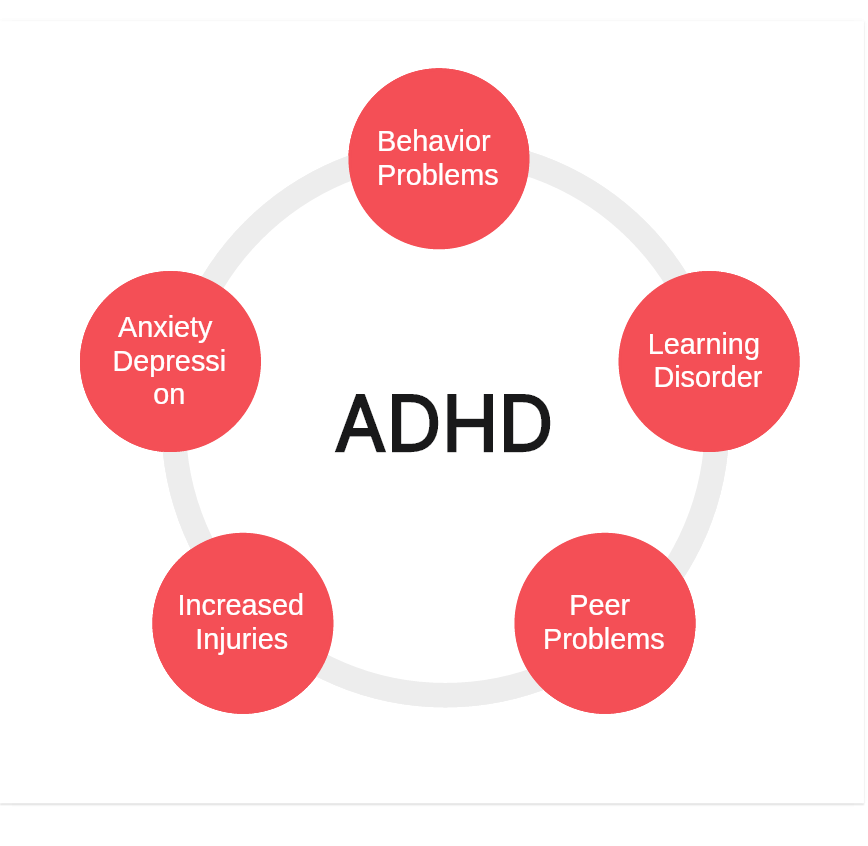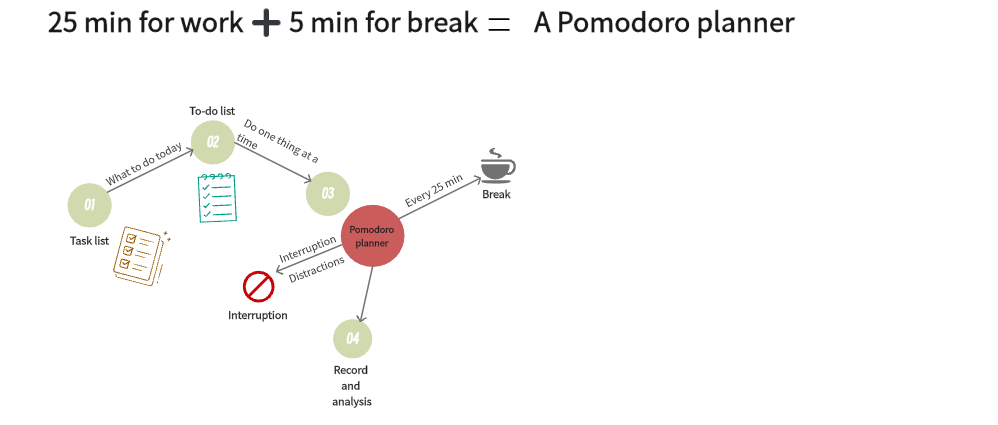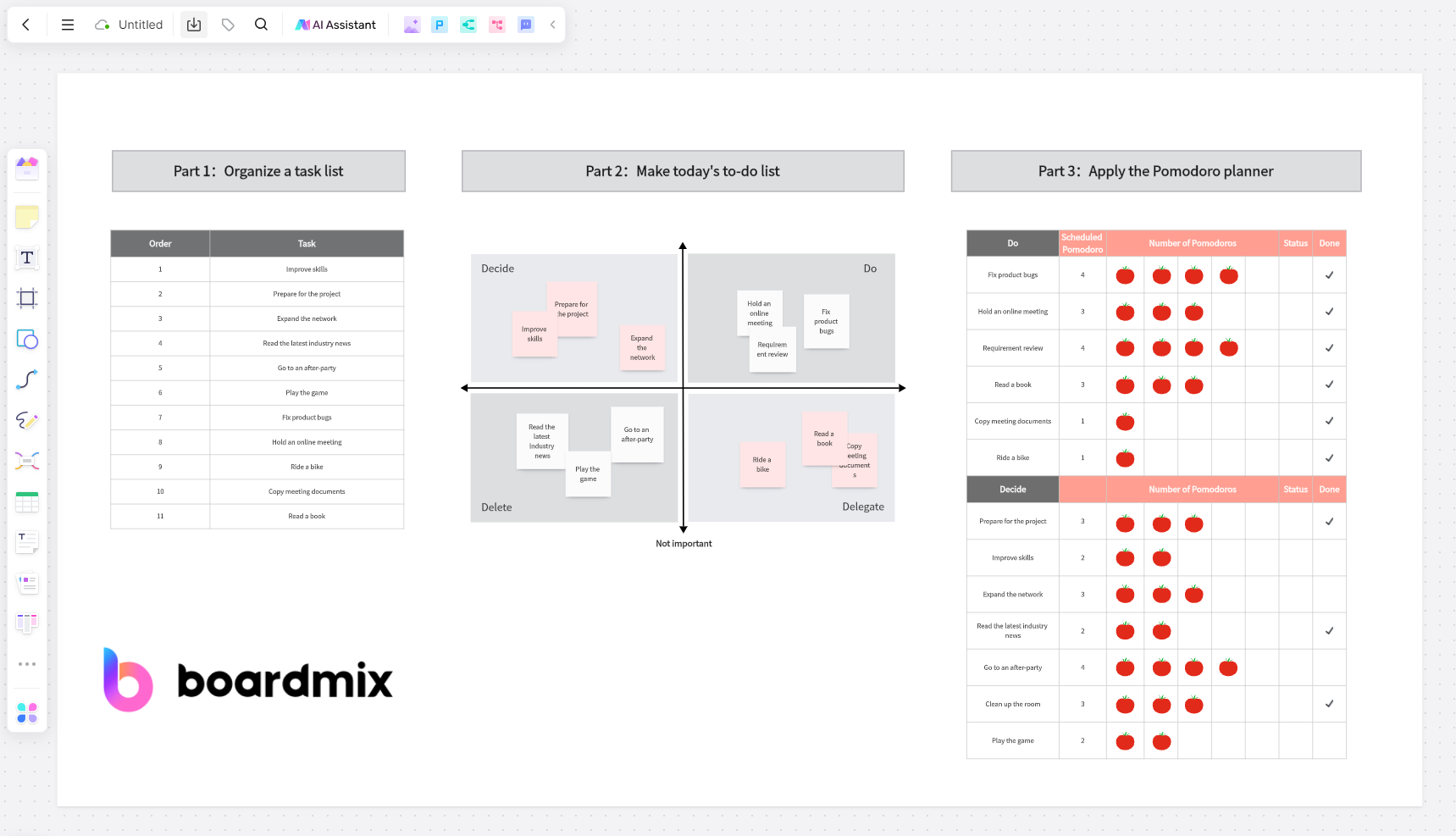Attention Deficit Hyperactivity Disorder (ADHD) is a neurodevelopmental disorder that affects both children and adults, impacting various aspects of daily life, including work, education, and personal relationships. Managing ADHD can be challenging, but innovative approaches like the Pomodoro Technique have shown promise in helping individuals with ADHD enhance focus and productivity.
Part 1. Understanding ADHD

ADHD stands for Attention Deficit Hyperactivity Disorder. It is a neurodevelopmental disorder characterized by persistent patterns of inattention, hyperactivity, and impulsivity that can significantly impact daily functioning and quality of life. ADHD can affect both children and adults, and its symptoms often manifest in various settings, such as school, work, and social interactions. The specific symptoms and their severity can vary among individuals, but they generally include difficulties with sustained attention, organization, time management, and impulse control. ADHD is a complex condition with a combination of genetic, neurological, and environmental factors contributing to its development. Treatment often involves a multimodal approach, including behavioral therapy, education, and, in some cases, medication.
Part 2. The Pomodoro Technique
Developed by Francesco Cirillo in the late 1980s, the Pomodoro Technique is a time management method that encourages work in focused, short intervals, called "Pomodoros," followed by brief breaks. Each Pomodoro is typically set for 25 minutes of concentrated work, followed by a 5-minute break. After completing four Pomodoros, take a more extended break of 15-30 minutes.

Part 3. How the Pomodoro Technique Benefits ADHD
The Pomodoro Technique offers several benefits for individuals with ADHD:
Structured Focus Periods: The Pomodoro Technique provides a structured framework that aligns with the ADHD brain's need for shorter, focused bursts of activity. This approach helps individuals break down tasks into manageable segments, making them less overwhelming.
Built-in Breaks: The regular breaks between Pomodoros help prevent burnout and reduce the risk of boredom, which is crucial for individuals with ADHD who may struggle with maintaining attention over extended periods.
Increased Productivity: The Pomodoro Technique leverages the ADHD brain's ability to hyper focus for short durations. By capitalizing on this strength, individuals can enhance productivity during each focused Pomodoro session.
Time Awareness: ADHD individuals often struggle with time perception. The Pomodoro Technique uses a timer to create a visual and auditory cue, helping individuals become more aware of time passing and facilitating a sense of urgency to complete tasks.
Adaptability: The technique can be adapted to suit individual preferences and attention spans. Some may find that shorter or longer Pomodoro sessions work better for them, allowing for a personalized approach.
In summary, the Pomodoro Technique's structured approach, emphasis on short, focused intervals, and built-in breaks make it a valuable tool for individuals with ADHD. By aligning with the unique challenges and strengths associated with ADHD, this technique can enhance focus, productivity, and overall time management skills.
Part 4. How to Implement the Pomodoro Technique for ADHD
Implementing the Pomodoro Technique for ADHD involves adapting the method to suit individual needs and preferences. Here's a step-by-step guide to help individuals with ADHD effectively incorporate the Pomodoro Technique into their daily routines:
Set Clear Goals: Define specific tasks to accomplish during each Pomodoro session. Having a clear objective enhances focus and motivation.
Choose Appropriate Time Intervals: Start with the traditional 25-minute Pomodoro work interval and a 5-minute break.Experiment with different intervals based on your attention span and energy levels.
Eliminate Distractions: During the focused work intervals, minimize external distractions such as phone notifications, social media, or background noise to optimize concentration.
Use Timer Apps: Numerous apps and tools are available that cater to the Pomodoro Technique. Choose one that suits your preferences and provides customizable timer settings.
Focus Intensely During Pomodoros: Commit to working on the designated task for the entire Pomodoro interval. If distractions arise, jot them down and return to the task without getting sidetracked.
Take Short Breaks: Use the 5-minute break to stretch, move around, or engage in a quick, enjoyable activity.Longer breaks (15-30 minutes) after completing four Pomodoros provide more substantial rest.
Track Progress: Keep a record of completed Pomodoros and tasks to monitor productivity over time. This can provide a sense of accomplishment and help identify patterns or areas for improvement.
Incorporate Visual Aids: Use visual aids like timers, countdowns, or task lists to enhance time awareness.Make use of color-coded or visually appealing tools to make the process more engaging.
By tailoring the Pomodoro Technique to individual preferences and combining it with other supportive strategies, individuals with ADHD can harness its benefits to improve focus, productivity, and time management skills. Consistency and adaptability are key elements in successfully implementing and sustaining this technique for long-term benefits.
Part 5. Best Pomodoro Timer Tool You Should Try
Boardmix is a revolutionary online whiteboard tool that doubles as an effective Pomodoro timer. It's designed to enhance productivity and streamline workflows by combining the power of visual collaboration with time management. With Boardmix, you can sketch out your ideas, brainstorm with your team, and manage your tasks all in one place. The built-in Pomodoro timer allows you to break down work into intervals, traditionally 25 minutes in length, separated by short breaks. This method is proven to improve mental agility and keep you focused on the task at hand. Whether you're working solo or collaborating with a team, Boardmix is the perfect tool to keep your projects organized and on track.

Key features of Boardmix:
- Visual Collaboration: Boardmix allows you to brainstorm and visualize ideas in real-time with your team, no matter where they are located."
- Variety of Templates: Boardmix offers a wide range of pre-designed templates for various use-cases like project planning, design thinking, agile workflows etc."
- Interactive Whiteboard: The interactive whiteboard feature lets you sketch, draw, or write just as you would on a physical whiteboard.
- Task Management: With Boardmix's task management feature, you can assign tasks, track progress and manage workflows efficiently.
FAQs about Pomodoro Technique for ADHD
1. Does the Pomodoro Technique work with ADHD?
Yes, the Pomodoro Technique can be effective for individuals with ADHD. Its structured time intervals and breaks align well with ADHD management strategies, providing a sense of structure and reducing the likelihood of distraction. Breaking tasks into manageable chunks enhances focus and productivity. However, individual responses may vary, and it's essential to tailor productivity strategies to personal preferences and needs. Regular breaks and a timer-based approach can help individuals with ADHD stay engaged and manage their attention effectively.
2. What is the 30-minute rule for ADHD?
The 30-minute rule for ADHD suggests breaking tasks into 30-minute intervals to enhance focus and productivity. This technique involves dedicating 30 minutes to a specific task, followed by a brief break. This structured approach aligns with the idea that shorter, well-defined periods can help manage attention and prevent overwhelm. It encourages individuals with ADHD to work in manageable chunks, making tasks more approachable and reducing the likelihood of distraction or boredom. Adjustments can be made based on individual preferences and attention spans.
3. What is the best study break ratio for ADHD?
There is no one-size-fits-all answer to the best study break ratio for ADHD, as individuals vary in their attention spans and preferences. However, a commonly recommended ratio is the Pomodoro Technique, involving 25 minutes of focused work followed by a 5-minute break. This structured approach helps manage attention and prevent burnout. Experimenting with different ratios, such as 30 minutes of work with a 5–10-minute break, can help individuals with ADHD find the optimal balance for their concentration and productivity. Personalized adjustments based on individual needs and preferences are crucial.
Conclusion
The Pomodoro Technique offers a structured and adaptable approach to time management, making it particularly beneficial for individuals with ADHD. By harnessing the power of focused work intervals and built-in breaks, this technique can help manage ADHD symptoms, enhance productivity, and contribute to a more organized and successful daily routine. As with any strategy, it's essential to experiment with the Pomodoro Technique to find the optimal balance for individual needs and preferences.
Boardmix is an excellent tool for those utilizing the Pomodoro technique to manage ADHD. Its built-in Pomodoro timer helps you structure your work into manageable intervals, promoting focus and reducing the overwhelm often associated with ADHD. Give Boardmix a try and experience how it can transform your productivity and make managing tasks more manageable.













